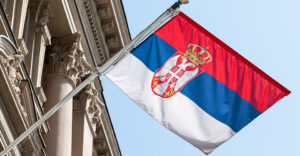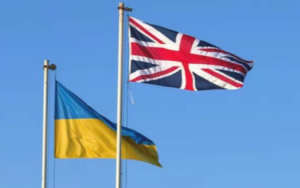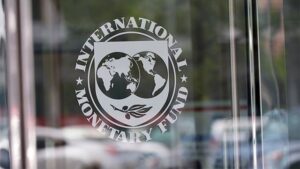
The Chinese company China Machinery Engineering Corporation (CMEC) is threatening Serbia with a lawsuit in international arbitration worth USD 795 million due to years of delays in the construction of the Kostolac B3 thermal power plant. The Chinese believe that the four-year delay was not their fault, and that EPS is responsible. In case of a loss, Serbia intends to file a counterclaim for damage caused by the need to import electricity. If the case goes to arbitration, the project could cost Serbia $1.5 billion, including the $715 million already paid.
The Chinese side claims that the increase in costs is due to inflation, the coronavirus and the war in Ukraine, as well as changes in the scope of work by EPS. The main disagreement concerns the revision of prices that were stipulated in the 2013 contract, when the project was supposed to be completed in 2019.
Despite the completion of construction and commissioning of the facility in December 2024, negotiations on compensation have not been completed, as the Chinese company is demanding a revision of the contract price. The Chinese argue that inflation and changes in the design documents have led to additional costs, and also take into account problems with obtaining permits and the effects of the pandemic and war in Ukraine.
Serbia tried to negotiate, but the Chinese did not agree to a compromise and continued to seek compensation through arbitration. In the event of arbitration, China is expected to file a claim for an amount exceeding the original project amount.
Source: https://t.me/relocationrs/516

Integration of European standards, in particular the provisions of EU Regulation 305/2011 on the quality of construction products and new environmental standards, is one of the important criteria for attracting investments in the reconstruction of Ukraine, the growth of the local construction market and increasing the competitiveness of domestic producers of construction materials, believes the executive director of the association “Ukrcement” Lyudmyla Krypka.
“European integration is one of the criteria for investing in Ukraine. The key factors that will contribute to the growth of construction in Ukraine and the development of the construction sector are government programs for infrastructure rehabilitation, intensification of construction works, localization of production, introduction of modern technologies and focus on environmental standards. It is those Ukrainian producers who will focus on these areas that will be able to consolidate competitive positions, stimulate the development of the industry and provide the market with quality building materials,” she said at the press conference ‘State Partnership and Investments in Rehabilitation of Territories’ at the Interfax-Ukraine agency on Friday.
According to her, cement industry enterprises were among the first to implement the provisions of the 305th regulation in their activities and are now working on the implementation of environmental standards, which are also included in the new EU directive.
Kripka noted that the implementation of Euro standards not only increases the competitiveness of Ukrainian producers in international markets, but also opens the way to development and innovation.
One of the important tasks for the cement industry is to reduce CO2 emissions.
“The industry is working to reduce emissions. Enterprises introduce the best available technologies and management methods, take part in monitoring, reporting and verification of greenhouse gas emissions. Ukraine can become an example of simple methods to reduce CO2 emissions by using biomass in clinker firing,” the expert said.
Cement industry companies themselves invest in their own production, Kripka noted. Companies also invest in the construction of additional technological lines, clinker storage silos, terminals, kiln modernization and transition to alternative fuels. Further capacity expansion of cement plants will start during the active recovery phase, when cement consumption will increase to 10-10.5 million tons. Over the past two years, this figure is about 6.3 million tons, she explained.
The Ukrcement Association was established in January 2004 by reorganizing the Ukrainian Concern of Cement Industry Enterprises and Organizations Ukrcement. The association comprises five groups of companies, including nine cement enterprises.
CONSTRUCTION, European standards, INTEGRATION, investments in Ukraine

Ukrainian President Volodymyr Zelensky has arrived on a visit to the United Kingdom of Great Britain. According to flightaware.com, the President’s Airbus A319 UR-ABA presidential plane has just landed at Stansted Airport (STN), London. According to The Guardian, Vladimir Zelensky landed in the UK ahead of tomorrow’s European defense summit.
“TV footage showed his motorcade pulling away from the runway at London’s Stansted airport,” the newspaper writes.
British Prime Minister Keir Starmer will reportedly hold talks with Ukrainian President Volodymyr Zelensky and Italian Council of Ministers President Giorgia Meloni at Downing Street on Sunday ahead of a summit aimed at securing a “lasting and enforceable” peace in Ukraine.

The International Monetary Fund (IMF) has revised downward its forecast for Ukraine’s economic growth in 2025, lowering it by 0.5 percentage points (p.p.) from the previous forecast to 2-3%, according to a press release from the Fund based on the results of the mission for the seventh review of the Extended Fund Facility (EFF).
“Real GDP growth is estimated at 3.5% in 2024, but is expected to slow to 2-3% in 2025, reflecting unfavorable factors related to labor market constraints, damage to energy infrastructure, and Russia’s ongoing war in Ukraine,” the release said following the staff-level agreement (SLA) on Friday.
Earlier this week, the European Bank for Reconstruction and Development (EBRD) downgraded its forecast for Ukraine’s economic growth in 2025 to 3.5%, while last September it expected it to reach 4.7%.
As reported, the World Bank (WB) in its Global Economic Prospects published on January 17 downgraded its forecast for Ukraine’s GDP growth in 2025 to 2% from 6.5% in the June report, but improved it for 2026 to 7% from 5.1%.
The National Bank of Ukraine also changed its forecasts. Given the security risks and the difficult situation on the labor market, the NBU lowered its real GDP growth forecast for 2025 from 4.1% to 3.6% in late January, while the state budget for 2025 is based on a 2.7% GDP growth forecast.

On February 24, 2025, the Swedish government announced that it will provide financial support to the Ukrainian Institute in Sweden in the amount of SEK 9 million to implement projects aimed at promoting Ukrainian culture.
“Russia’s full-scale invasion of Ukraine has caused enormous cultural destruction. Russia’s attack on Ukrainian cultural identity is manifested in everything from the massive looting of cultural heritage to the destruction of historical monuments,” the country’s highest executive body said in a statement.
The Ukrainian Institute in Sweden was founded in 2014 and is headquartered in Stockholm. The main areas of its activity are cultural diplomacy, education and public opinion formation.
“The Ukrainian Institute in Sweden plays a key role in preserving Ukrainian culture beyond the Russian destruction and ensuring that Ukraine is represented on international cultural platforms. Recognizing this important mission, the Swedish government has decided to provide financial support to the Institute to continue its activities,” the Swedish government said.
In the face of Russian attempts to deprive Ukraine of its cultural identity, the Institute works to preserve Ukrainian cultural heritage. This is achieved by disseminating knowledge about Ukraine, its history and culture, creating a platform for Ukrainian art abroad, representing Ukraine in the Swedish and European cultural space, and promoting Ukraine’s European integration through cultural dialogue.
Raising awareness of Ukraine in Europe and vice versa also reduces the impact of disinformation and strengthens the resilience of Ukrainian society.